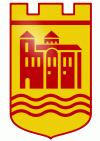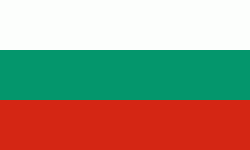Asenovgrad (Obshtina Asenovgrad)
 |
Asenovgrad also includes the districts of Gorni Voden and Dolni Voden, which until 1986 were separate villages. According to the census data of 2021, the population of the city is 47 815 people. Above the town are the remains of the Asen Fortress, an old fortress that was strengthened under Tsar Ivan Asen II and turned into an important military post in the defense of the southern borders of the Second Bulgarian Kingdom.
The city is known for its many churches, monasteries and chapels and is often called Little Jerusalem. It is also known as the "City of Bridal Gowns" because of the large number of ateliers and shops for wedding dresses and accessories.
The majority of Asenovgrad residents are Bulgarians, with representatives of the Turkish and Romani people ethnic groups in the city.
Asenovgrad was founded by the Thracians as Stenímachos (Στενήμαχος) around 300–400 BC. In 72 BC the city was captured by the troops of the Roman Empire as part of the Roman expansion towards the Black Sea. After a long period of peace, the town was destroyed by the Goths in 251, but rebuilt later. In 395 the Roman Empire was divided into two parts and the city fell under Byzantine Empire control. Afterwards, the Slavic tribes flooded the region (until around 700 AD) and became the majority of the population.
During the wars between the Bulgarian Empire and the Byzantine Empire, the city became a major military stronghold for the Bulgarian rulers. Due to aggravation of the relationships with the Latin Empire, in 1230 Bulgarian Tsar Ivan Asen II strengthened the local fortress Stanimaka and for this reason the city was named after him in 1934 (literally city of Asen). After Bulgaria was conquered by the Ottoman Empire, Roma and Turks settled in Stanimaka, and nowadays make up 15% of the municipality of Asenovgrad's population, the rest 75% being ethnic Bulgarians and 10% – unknown and others.
The town was inhabited predominantly by Greeks (52% in 1900) up to the post-World War I population exchanges between Bulgaria and Greece. Bulgarians from various regions in Greece settled in Asenovgrad, while its Greek inhabitants went to Naousa and Kilkis in Macedonia. Naousa and Kilkis are currently sister towns of Asenovgrad.
Tane Nikolov, revolutionary and leader of the Internal Macedonian Revolutionary Organization, spent his last years in Asenovgrad and died here in 1947.
Map - Asenovgrad (Obshtina Asenovgrad)
Map
Country - Bulgaria
 |
 |
| Flag of Bulgaria | |
One of the earliest societies in the lands of modern-day Bulgaria was the Neolithic Karanovo culture, which dates back to 6,500 BC. In the 6th to 3rd century BC the region was a battleground for ancient Thracians, Persians, Celts and Macedonians; stability came when the Roman Empire conquered the region in AD 45. After the Roman state splintered, tribal invasions in the region resumed. Around the 6th century, these territories were settled by the early Slavs. The Bulgars, led by Asparuh, attacked from the lands of Old Great Bulgaria and permanently invaded the Balkans in the late 7th century. They established the First Bulgarian Empire, victoriously recognised by treaty in 681 AD by the Eastern Roman Empire. It dominated most of the Balkans and significantly influenced Slavic cultures by developing the Cyrillic script. The First Bulgarian Empire lasted until the early 11th century, when Byzantine emperor Basil II conquered and dismantled it. A successful Bulgarian revolt in 1185 established a Second Bulgarian Empire, which reached its apex under Ivan Asen II (1218–1241). After numerous exhausting wars and feudal strife, the empire disintegrated and in 1396 fell under Ottoman rule for nearly five centuries.
Currency / Language
| ISO | Currency | Symbol | Significant figures |
|---|---|---|---|
| BGN | Bulgarian lev | лв | 2 |
| ISO | Language |
|---|---|
| BG | Bulgarian language |
| TR | Turkish language |















